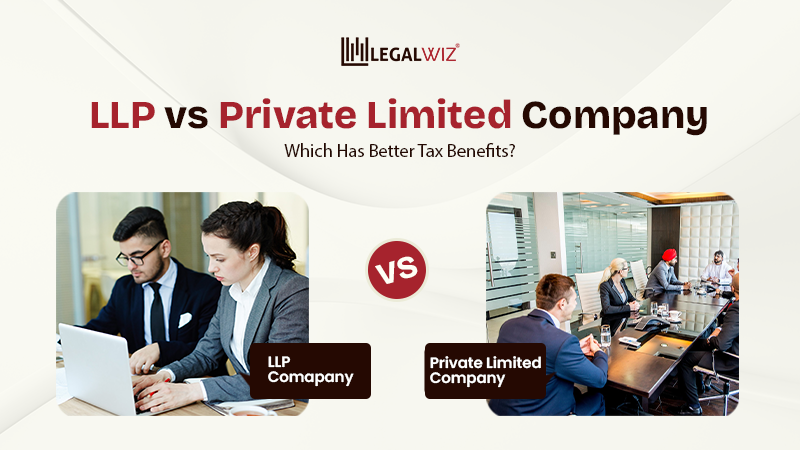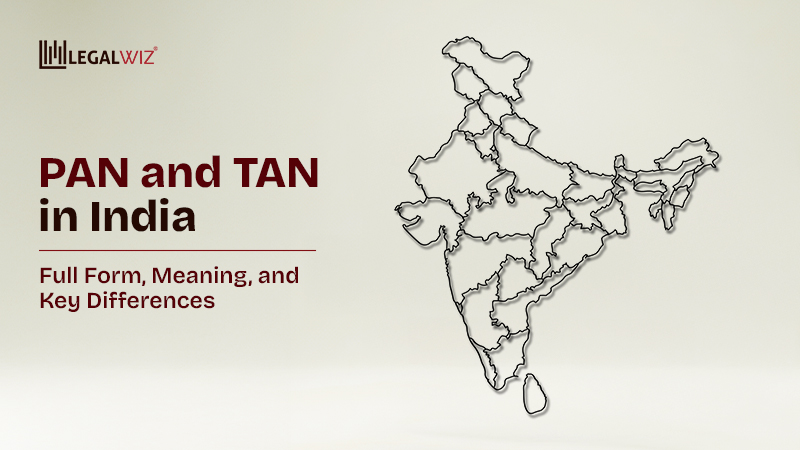How Do Private Companies Issue Shares in India? A Step-by-Step Guide
Issuing shares allows a private company to provide ownership stakes to its founders, investors, or employees. It helps raise capital, expand ownership, and reward key contributors, without taking on debt.
A private limited company may sell shares, but it has to follow the regulations set forth in the Companies Act, 2013, and the MCA’s rules. These regulations say who may get shares, how the process should work, and the actions that need to be taken to make sure that both the firm and its investors are safe.
While issuing shares can strengthen a company’s financial base, it can also lead to disagreements among shareholders if not handled transparently. To understand how such conflicts can arise and be resolved, read our detailed blog on How to Handle Shareholder Disputes in Private Limited Companies.
This guide explains the complete process of issue of shares in a private limited company, covering legal methods, documentation, valuation, and compliance requirements.
1. Can a Private Company Issue Shares?
Yes, a private limited company can issue shares, but the process and scope are tightly governed by the Companies Act, 2013. Unlike public companies, private entities face restrictions on how and to whom shares can be issued.
Legal Position Under the Companies Act, 2013
Under Section 2(68), a private company is prohibited from inviting the public to subscribe to its securities. It can issue shares only through private placement, rights issue, or bonus issue, as defined under Sections 62 and 42 of the Act. Every such issue must comply with the prescribed filing, disclosure, and approval norms laid down by the Ministry of Corporate Affairs (MCA).
Eligibility Conditions for Issuing Shares
A private company may issue shares if:
- A company can issue shares only up to the authorised share capital stated in its MOA. If this limit is not enough, it must file Form SH-7 with the Registrar to increase authorised share capital.
- The Board of Directors approves the issuance through a properly passed board resolution
- Under Section 62(1)(a), existing shareholders get the first right to subscribe to new shares before outsiders.
- The company complies with valuation requirements under the Companies (Share Capital and Debentures) Rules, 2014, if shares are issued to new investors
Note: Valuation is not mandatory for rights or bonus issues, only for private placement and preferential allotments to outsiders. The report must be issued by a registered valuer under Rule 11 of the Companies (Share Capital and Debentures) Rules, 2014.
Existing Shareholders vs New Investors
- Existing Shareholders: You may give them shares via a rights issue (in proportion to how many shares they already own) or a bonus issue (free shares given out of earnings or reserves).
- New Investors: Outsiders may only acquire shares via private placement, which is limited to 200 investors each year, excluding ESOP workers and eligible institutional buyers. Each allocation requires a private placement offer letter (PAS-4) and return of allotment (PAS-3).
Limitation: Why Private Companies Cannot Issue Shares to the Public
Private companies are legally barred from making public offers or listing their shares on a stock exchange. This restriction maintains their private nature, as per Section 2(68). In contrast, public companies can issue shares to the general public through Initial Public Offerings (IPOs) and raise capital from unlimited investors, subject to compliance with SEBI regulations.
Put simply, while private companies can issue shares, they must do so selectively, following clear legal boundaries and internal approvals, not through open public subscription.
2. Types and Methods of Issuing Shares in a Private Limited Company
Private limited companies can raise capital through four primary methods, depending on their ownership goals and funding needs. The table below explains the 4 methods of issuing shares with their key features and examples.
| Method of Issuing Shares | Description | Who Can Receive Shares | Key Legal Provisions | Example |
| Rights Issue | Shares are offered to existing shareholders in proportion to their current holdings. It allows them to maintain ownership percentage | Existing shareholders | Section 62(1)(a) of the Companies Act, 2013 | If a shareholder holds 10% of the company, they are entitled to 10% of the new issue |
| Private Placement | Shares are issued to a select group of investors (not exceeding 200 in a financial year), such as venture capitalists or angel investors | Chosen investors approved by the Board and shareholders | Section 42 of the Companies Act, 2013 | A startup issues shares worth ₹50 lakh to a venture capital firm |
| Bonus Issue | Additional shares are given to existing shareholders free of cost, from accumulated profits or reserves. It capitalizes company earnings | Existing shareholders | Section 63 of the Companies Act, 2013 | The company issues one bonus share for every five shares held |
| Employee Stock Option Plan (ESOP) | Shares are offered to employees as part of a reward or incentive plan, encouraging loyalty and performance | Eligible employees and directors | Section 62(1)(b) and Rule 12 of the Share Capital and Debentures Rules, 2014 | A company grants 500 ESOPs to senior managers, exercisable after |
Looking to explore how a private company raises funds and what legal mandates apply? Read our full piece on Funding in a Private Limited Company: Sources & Mandates.
3. Step-by-Step Procedure for Issue of Shares Under Companies Act, 2013
The process of issuing shares must follow specific procedures and compliance norms under the Companies Act, 2013. It ensures transparency, proper documentation, and protection of shareholder interests.
Step 1: Convene the First Board Meeting
- Hold a board meeting to discuss the issue of shares
- Discuss key details such as the number of shares, issue price, and purpose of the issue
- Pass a Board Resolution to approve the proposal and record it in the minutes
Step 2: Decide the Mode of Issue
The company must decide how it wants to issue the shares. The four common modes are:
- Rights Issue – Offered to existing shareholders in proportion to their holdings (Section 62)
- Private Placement – Offered to a select group of investors such as VCs or angel investors (Section 42)
- Bonus Issue – Issued from the company’s free reserves or profits (Section 63)
- ESOP (Employee Stock Option Plan) – Granted to employees as incentives (Rule 12 of the Share Capital and Debentures Rules, 2014)
Want to learn how ESOPs work under the law, step-by-step? Read our article on Understanding ESOPs in Private Limited Companies.
Each method has its own documentation and approval requirements.
Step 3: Pass Required Resolutions and File Forms
- Pass either an ordinary or special resolution, depending on the type of issue
- File Form MGT-14 with the Registrar of Companies within 30 days, only if a special resolution is passed (e.g., for private placement approval)
Before passing company decisions, make sure you know which type of resolution applies. Get the breakdown in our article on Understanding Ordinary Resolutions & Special Resolutions.
- Ensure that all decisions are properly documented and attached to the filed form
Ensure compliance after passing a special resolution. Our guide explains the filing requirements of Form MGT-14 and how to submit it correctly.
Step 4: Issue Offer Letters and Invite Applications
Once the approvals are complete:
- Prepare and issue offer letters to eligible shareholders or identified investors
- For private placement, use Form PAS-4 as the formal offer document
- Dispatch offer letters through registered post, courier, or electronic mode, maintaining proof of delivery
- The offer should include details such as share price, payment terms, and validity period
Step 5: Receive Subscription Money
- Collect application money only through banking channels such as NEFT, RTGS, or cheque
- Deposit all funds into a separate share application money account
- Allot shares within 60 days of receiving the money
- If the company fails to allot within this period, refund the money within the next 15 days to avoid penalties
Step 6: Allotment of Shares
- Conduct a second Board Meeting after the offer period closes
- Review all valid applications and pass a resolution to allot shares
- File Form PAS-3 (Return of Allotment) with the ROC within 30 days of the allotment
- The form must include details such as the names of allottees, number of shares issued, and the revised shareholding structure
Step 7: Issue Share Certificates
- Prepare and issue share certificates (Form SH-1) to allottees within 60 days of allotment
- For dematerialised shares, credit the allotted shares to the shareholders’ demat accounts through depositories like CDSL or NSDL
- Pay the applicable stamp duty as per state laws before issuing certificates
- For physical share certificates, affix non-judicial stamp paper or pay e-stamp duty as per your state’s rates before issuance
Step 8: Update Registers and Maintain Records
- Update the Register of Members (Form MGT-1) and other statutory records
- Maintain a Register of Allotments, Minutes of Board Meetings, and proof of dispatch for all correspondence
- Ensure compliance with all ROC filings and preserve records for future reference
4. How Can a Private Limited Company Issue Shares to Investors
For most private limited companies, issuing shares to new investors is carried out through private placement. This route allows the company to raise capital from a select group of individuals or institutions without inviting the general public.
Private placement can be made only to identified persons approved by the Board and shareholders. The offer must be made formally and cannot exceed the prescribed limit of investors in a financial year as per the Companies Act, 2013.
Key requirements include:
- A formal valuation report from a registered valuer to determine the fair price of shares.
- Preparation of the Private Placement Offer Letter (Form PAS-4).
- Maintenance of a record of the offer in Form PAS-5.
- Execution of a Share Subscription Agreement, defining rights, responsibilities, price, and payment terms.
Shareholders’ approval is mandatory before issuing shares under private placement. Once the offer is made, the company must collect the subscription money only through banking channels. Make sure to maintain a separate record of private placement in PAS-5 as per Rule 14(3).
Foreign investors can also subscribe to shares, provided the company complies with FEMA and RBI guidelines, including sectoral caps, pricing norms, and reporting requirements. After allotment, Form FC-GPR must be filed with the RBI within 30 days through the FIRMS portal to report the foreign investment.
5. Compliance and Legal Requirements
Issuing shares under private placement involves strict compliance with the Companies Act, 2013.
Relevant provisions include:
- Section 42 for private placement
- Section 62 for preferential allotment or rights issue
Before issuing shares, the company must obtain board and shareholder approval. As mentioned earlier, Form MGT-14 is required only for special resolutions, such as private placement, and not for board resolutions.
A valuation report is compulsory to justify the issue price. Within 60 days of receiving the application money, the firm must complete the allotment and return Form PAS-3 (Return of Allotment) to the Registrar within 30 days.
Share certificates must be issued within 60 days following allocation, and state stamp duty fees apply.
Failure to meet these deadlines or paperwork requirements may result in MCA fines and other compliance action.
6. Can a Private Limited Company Issue Shares to the Public
No. A private limited company cannot invite the public to subscribe to its shares. This restriction exists to maintain privacy in ownership and prevent public fundraising activities without regulatory oversight.
Public companies, on the other hand, may raise funds through public offers such as IPOs, rights issues, and follow-on public offerings. Private companies must rely on private placement, rights issues, ESOPs, or preferential allotments for raising capital.
7. Documents Required for Issue of Shares
The essential documents include:
- Board and shareholder resolutions
- Private Placement Offer Letter
- Share Subscription Agreement
- Valuation report
- Form PAS-3 with supporting attachments
- Updated share certificates and statutory registers
Conclusion
The issue of shares in a private limited company is a regulated procedure that requires meticulous adherence to protocol, documentation, and official mandates. Private companies can’t ask the public to invest, but they may receive money via private placement, rights issues, or other legal ways as long as they follow the guidelines outlined by the MCA.
Getting aid from an expert may help your firm sell shares and make money in a way that is legal and goes smoothly.
Do you need help issuing shares for your private limited company? The experts at LegalWiz.in can assist you with every step.
Frequently Asked Questions
How can a private limited company issue shares to investors?
A private company can issue shares through private placement to a limited group of investors. It needs shareholder approval, an offer letter (Form PAS-4), and must file Form PAS-3 within 30 days of allotment.
Can a private company issue shares to the public?
No, private companies can’t invite the public to buy shares. They can raise funds only through rights issues, bonus issues, ESOPs, or private placements.
Is valuation required for all share issues?
Valuation is needed only for private placements and preferential allotments to outsiders, not for rights or bonus issues.
What if the authorised share capital is too low?
The company must first increase its authorised share capital by filing Form SH-7 with the Registrar.

Sapna Mane
Sapna Mane is a skilled content writer at LegalWiz.in with years of cross-industry experience and a flair for turning legal, tax, and compliance chaos into clear, scroll-stopping content. She makes sense of India’s ever-changing rules—so you don’t have to Google everything twice.







